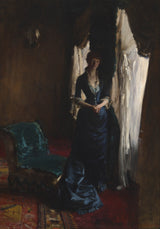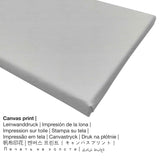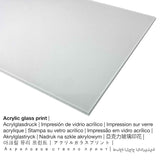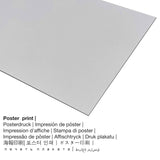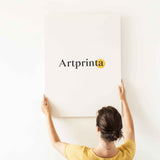John Singer Sargent, 1882 - Madame Paul Escudier (Louise Lefevre) - mbipụta nka mara mma.
Ụtụ gụnyere. Mbupu gbakọrọ na ndenye ọpụpụ.
Ama
The nkà nke oge a artpiece was created by John Singer Sargent. The beyond 130 ụdị izizi dị afọ nwere nha - 129,5 × 91,4 cm (51 × 36 na) e tekwara ya na ọkara mmanụ na kwaaji. Ederede ihe osise mbụ bụ nke a: signed, lower right: John S. Sargent 1882. Ọzọkwa, ihe nkiri a dị n'okpuru Ụlọ ọrụ Art nke Chicago digital art collection. With courtesy of Art Institute Chicago (licensed - public domain). The creditline of the artpiece is: Bequest of Brooks McCormick. Further, the alignment is Eserese and has a ratio of 1 : 1.4, which implies that the length is 29% shorter than the width. The painter John Singer Sargent was an artist, whose art style can mainly be classified as Impressionism. The painter lived for a total of 69 years and was born in 1856 na Florence, mpaghara Firenze, Tuscany, Italy ma nwụọ na 1925.
Additional description as provided from Art Institute Chicago website (© Nwebiisinka - Art Institute Chicago - Ụlọ ọrụ Art Chicago)
In this depiction of Frenchwoman Louise Escudier, John Singer Sargent undercut traditional portrait conventions by prioritizing the dramatic effects of light and dark in a Parisian apartment. The picture grew out of a series of atmospheric views of working-class women in darkened interiors that the artist produced on two trips to Venice between 1880 and 1882. It combines the Impressionists’ gestural brushwork with a heightened chiaroscuro (light and shade) drawn from Spanish Old Masters such as Diego Velázquez. These compositions helped to establish Sargent’s reputation in Paris as a daring and original painter.
Tebụl a haziri ahazi nke ihe osise
| Aha nke ọrụ nka: | "Madame Paul Escudier (Louise Lefevre)" |
| Nhazi nka nka: | sere |
| Okwu nche anwụ: | nkà nke oge a |
| Nhazi oge: | 19th narị afọ |
| Afọ okike: | 1882 |
| Ogologo afọ nka nka: | 130 afọ |
| Ọkara nke ihe osise izizi: | mmanụ na kwaaji |
| Nha izizi nka: | 129,5 × 91,4 cm (51 × 36 na) |
| Akara aka na nka nka: | signed, lower right: John S. Sargent 1882 |
| Ụlọ ihe ngosi nka: | Ụlọ ọrụ Art Chicago |
| Ebe ngosi nka: | Chicago, Illinois, Njikota Obodo Amerika |
| Ebe nrụọrụ weebụ ihe ngosi nka: | Ụlọ ọrụ Art Chicago |
| Licensedị ikike: | ngalaba ọha |
| Site n'aka: | Ụlọ ọrụ Art Chicago |
| Ebe kredit nke ọrụ nka: | Arịrịọ nke Brooks McCormick |
Tebụl nkọwa omenkà
| Aha onye nka: | John Onye ọbụ abụ |
| Aha ndi ozo: | John Singer Sargent, Sargent John-Singer, js sargent, sargent j.s., Sargent John S., sargent john singer, J. Sargent, J. Singer Sargent, Sargent John Singer, J. s. Sargent, Sargeant John Singer, Sargent John, john s. sargent, john sargent, Sargent, J.S. Sargent |
| okike onye nka: | nwoke |
| Obodo onye nka: | American |
| Ọrụ onye na-ese ihe: | onye na-ese ihe |
| Country: | United States |
| Otu nka: | omenkà nke oge a |
| styles: | Mmetụta |
| Nwụrụ anwụ: | 69 afọ |
| Afọ ọmụmụ: | 1856 |
| Ebe amụrụ onye: | Florence, mpaghara Firenze, Tuscany, Italy |
| Nwụrụ n'afọ: | 1925 |
| Nwuru na (ebe): | London, Greater London, England, United Kingdom |
Nhọrọ akụrụngwa ngwaahịa gị
Anyị na-enye ụdị nha na ihe dị iche iche maka ngwaahịa ọ bụla. Nhọrọ ndị a dị maka n'otu n'otu:
- Mpempe akwụkwọ mmado ebipụtara na akwa akwa: Our poster is a printed flat canvas with a slight surface structure. Please bear in mind, that depending on the size of the poster we add a white margin between 2-6cm round about the artwork, which facilitates the framing.
- Mbipụta kanvas: A printed canvas, which should not be mistaken with a painting on a canvas, is a digital replica printed on an industrial printer. Further, a canvas produces a cosy, pleasing impression. How do I hang a canvas on the wall? A canvas print has the advantage of being low in weight, which means that it is quite simple to hang up the Canvas print without any wall-mounts. A canvas print is suited for all types of walls.
- Mbipụta iko acrylic (nke nwere ezigbo mkpuchi iko): The acrylic glass print, often named a plexiglass print, makes your favorite original work of art into gorgeous home decoration and is a viable alternative option to canvas and dibond fine art replicas. The work of art will be made with the help of state-of-the-art UV printing technology. This makes impressive and vivid colors. The major advantage of a plexiglass fine art copy is that contrasts and also small image details become more visible thanks to the granular gradation. The acrylic glass protects your custom fine art print against light and heat for many more years to come.
- Metal (aluminium debond mbipụta): These are metal prints on aluminium dibond with a true depth effect. The Aluminium Dibond Print is your ideal introduction to art prints on aluminum. The bright & white parts of the artpiece shine with a silk gloss but without glow. The direct print on Aluminum Dibond is the most popular entry-level product and is a truly stylish way to display fine art reproductions, because it draws attention on the replica of the artwork.
Nkọwa akụkọ ahaziri ahazi
| Nkewa edemede: | mmepụta nka |
| Mmeputakwa: | dijitalụ mmeputakwa |
| Production usoro: | mbipụta dijitalụ (Mbipụta UV ozugbo) |
| Mmalite ngwaahịa: | German mmepụta |
| Ụdị ngwaahịa: | na mmepụta ihe |
| Eji ngwaahịa a chọrọ: | mgbidi mgbidi, nka mgbidi |
| Nhazi nka nka: | nhazi ihe osise |
| Ụdị anya: | ogologo: obosara - 1: 1.4 |
| Ihe: | ogologo bụ 29% mkpụmkpụ karịa obosara |
| Akụrụngwa ị nwere ike ịhọrọ: | Mpempe akwụkwọ, akwụkwọ mmado (akwụkwọ akpa), mbipụta enyo acrylic (nwere ezigbo mkpuchi iko), mbipụta ọla (aluminium dibbond) |
| Nha n'arọwa n'elu ihe ndọtị (mbipụta akwa akwa): | 50x70cm - 20x28", 100x140cm - 39x55" |
| Mpempe iko acrylic (nwere ezigbo mkpuchi iko) nha: | 50x70cm - 20x28", 100x140cm - 39x55" |
| Mbipụta akwụkwọ mmado (akwụkwọ kwaaji): | 50x70cm - 20x28" |
| Nhọrọ nha nha nke aluminom dibond (ihe aluminom): | 50x70cm - 20x28", 100x140cm - 39x55" |
| Igwe onyonyo: | adịghị |
Ozi dị mkpa: We try everythig possible in order to depict the art products in as much detail as possible and to exhibit them visually in our shop. However, some colors of the print materials and the print result might differ to a certain extent from the representation on the monitor. Depending on the settings of your screen and the nature of the surface, color pigments may not be printed one hundret percent realistically. Because all fine art prints are printed and processed by hand, there might also be minor differences in the motif's size and exact position.
Enwere ikike nwebiisinka © | Artprinta.com

